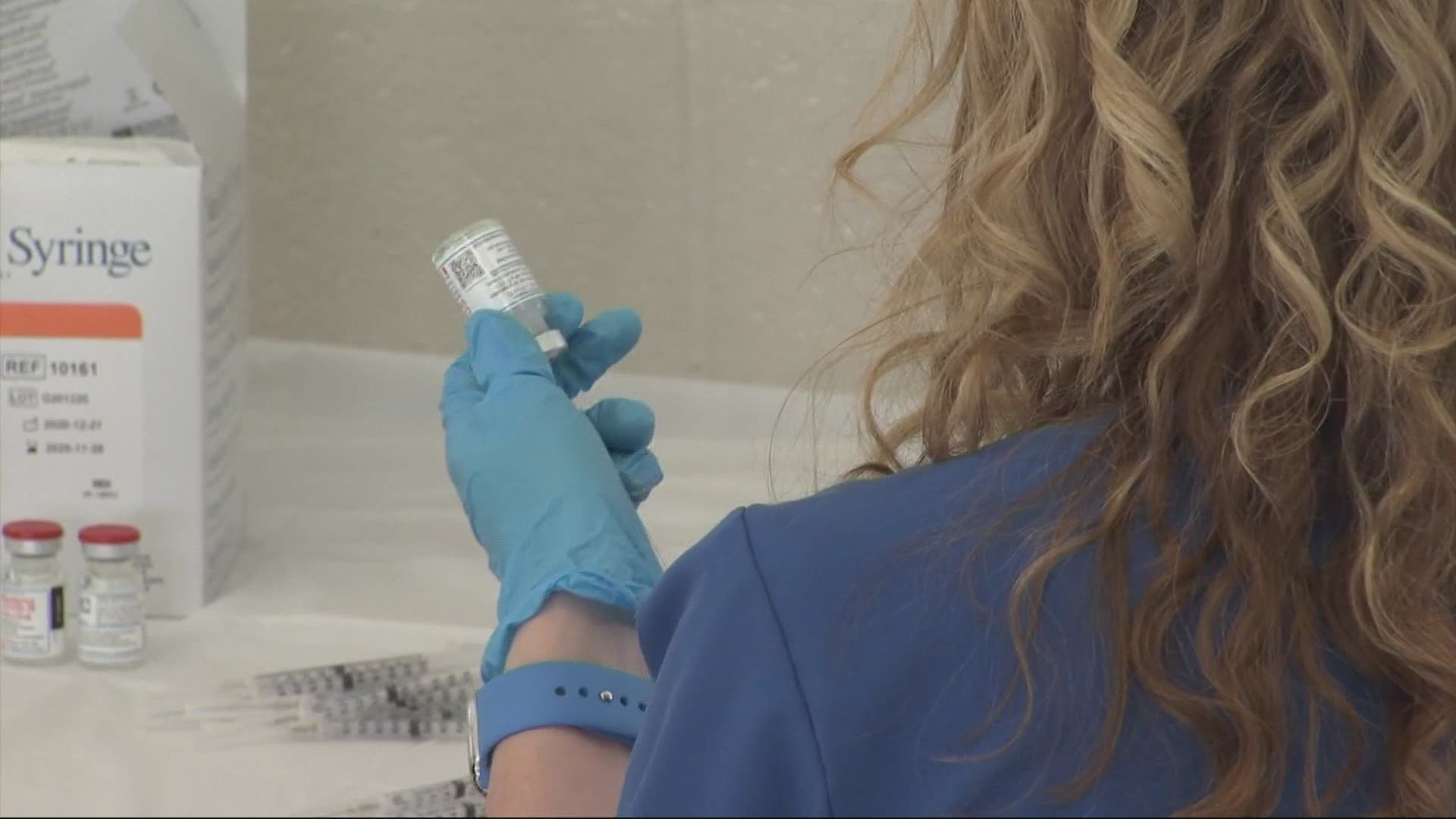PORTLAND, Ore. — As positive COVID-19 cases continue to surge in Oregon, 10 counties are moving into the high risk category, Gov. Kate Brown’s office announced on Tuesday.
The new risk level assignments for counties in Oregon will be effective from Friday, April 23 to Thursday, May 6. There are 23 counties at the high risk level, three at moderate risk and 10 at lower risk. Risk categories correspond with health and safety measures.
Additionally, 11 of the 23 high risk counties qualify to be at extreme risk. However, because the statewide hospitalization criteria for extreme risk have not been met, the counties will remain at high risk. For any county to go into the extreme risk category, there have to be 300 people hospitalized in the state with COVID-19. As of April 20, there were 255, which was 12 more than was reported on Tuesday, April 19. There also must be a 15% increase in the seven-day hospitalization average over the past week.
Case counts and hospitalizations are increasing in Oregon once again, which calls for increased safety measures for businesses and activities.
Washington County will join its metro neighbors, Multnomah and Clackamas Counties, in the high-risk category Friday. Tri-County Lead Health Officer Dr. Jennifer Vines says cases continue to trend upward in the region.
What is causing the trend is hard to pinpoint, according to Vines, but there are a few contributors.
"We are seeing more spread among younger people, and that makes sense since we protected our older groups with vaccine as a priority. It makes sense that the virus would find its way into younger people and spread there," Vines said. "We have in play some variants. The most common one is the California variant, which is about 20% more contagious. We do have some of the others, like the United Kingdom and the P1 from Brazil. Those, for now, are a minority of the variants, but they’re here and they’re more contagious"
Three counties have entered a two-week caution period. This applies to counties facing backward movement:
- Grant County qualifies for high risk but will be given a two-week caution period at lower risk because it moved down from moderate risk in the last movement period.
- Malheur County qualifies for moderate risk but will be given a two-week caution period at lower risk because it moved down from moderate risk in the last movement period.
- Umatilla County qualifies for high risk but will be given a two-week caution period at moderate risk because it moved down from high risk in the last movement period.
Here is a breakdown of where each county sits:
Lower Risk (10)
- Gilliam
- Grant
- Harney
- Lake
- Malheur
- Morrow
- Sherman
- Union (Moved from Moderate)
- Wallowa
- Wheeler
Moderate Risk (3)
- Curry (Moved from High)
- Hood River (Moved from Lower)
- Umatilla
High Risk (23)
- Baker* (Moved from Lower)
- Benton
- Clackamas*
- Clatsop (Moved from Moderate)
- Columbia* (Moved from Moderate)
- Coos
- Crook* (Moved from Lower)
- Deschutes*
- Douglas
- Jackson*
- Jefferson (Moved from Lower)
- Josephine*
- Klamath*
- Lane (Moved from Lower)
- Lincoln
- Linn*
- Marion*
- Multnomah
- Polk* (Moved from Moderate)
- Tillamook
- Wasco (Moved from Lower)
- Washington (Moved from Moderate)
- Yamhill (Moved from Lower)
You can find out what is open and safe to do in your county by visiting coronavirus.oregon.gov.

